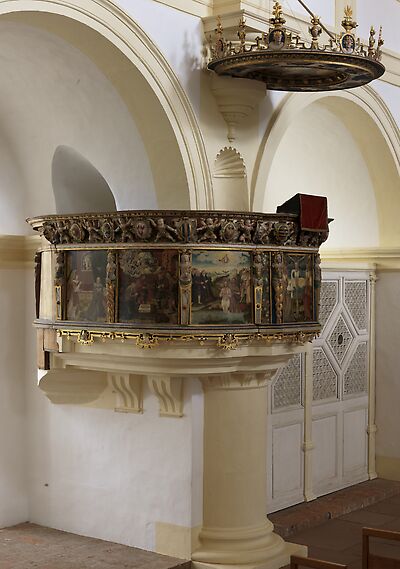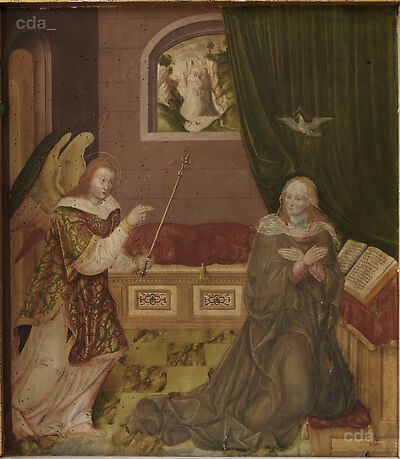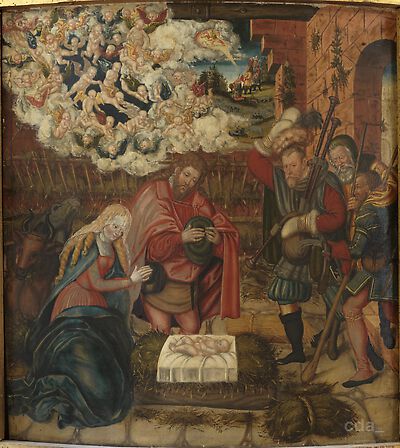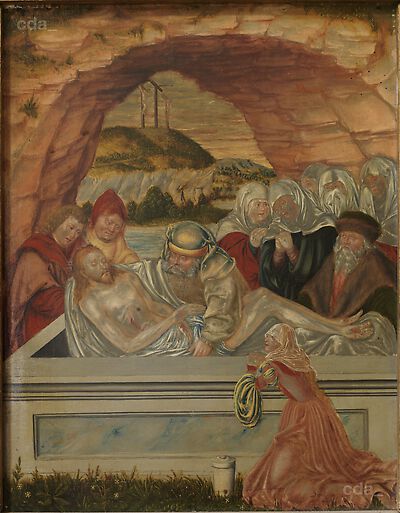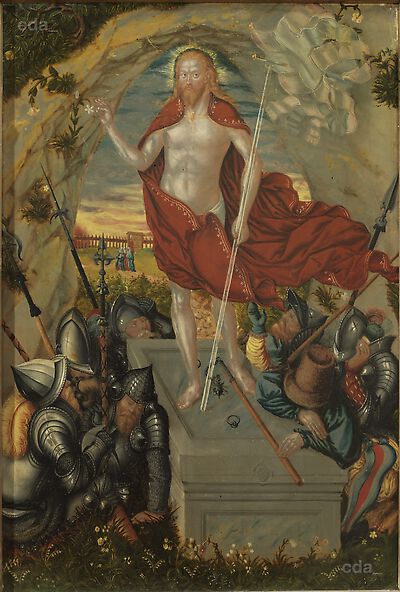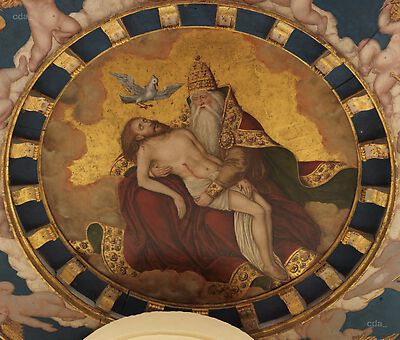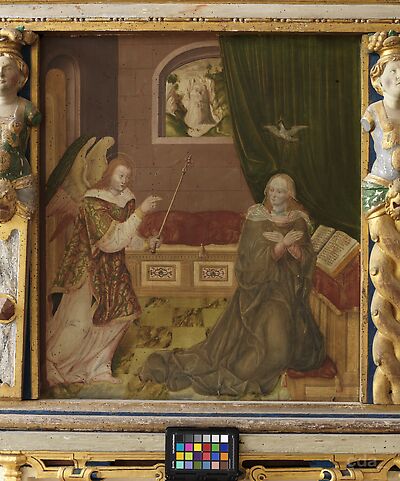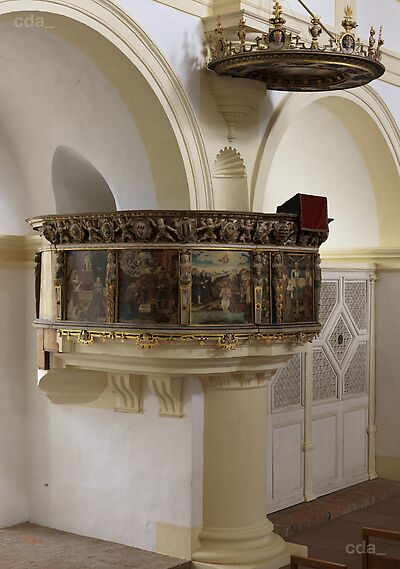Support
The panels are mounted in the pulpit and due to the coniferous wood panelling are not accessible from the reverse, therefore any assessment of the support remains conditional. In the few areas where bare wood is visible it is pale in appearance.
The examination report from 1990 of the conservation of the abat-voix states that its panel painting was executed on lime wood. The support of the altarpiece created by Cranach the Younger for the castle chapel was also lime wood. It may therefore be assumed that the pulpit paintings were also painted on lime wood.
Viewed in raking light a slight unevenness of the surface suggests that the panel consists of four planks.
[Herrschaft 2013, 35, 37]
Ground and Imprimatura
A thin glue-chalk ground was applied with a brush to the sized support. On the right and left edges of the panel the ground extends to the edge of the support. The upper edge of the panel appears to have a continuous barb, which is visible on the left half of the panel. It may be assumed that the panel was fixed in plane along at the top and bottom edges by a grooved batten while the ground was applied. There is a thin lead white imprimatura covering the ground.
[Herrschaft 2013, 39]
Underdrawing
The underdrawing on the pulpit paintings was executed on the imprimatura. The lines were carried out in a dry drawing material, possibly a grey/black chalk. The type of underdrawing can be described as sketchy and reduced to the essential lines to describe contours and to define forms. Without elaboration of details and hatching strokes for shadows or volume these underdrawings serve only as a rough orientation for the painted version. During the underdrawing process no clarification from a rough design to a more detailed final underdrawing is apparent. It is hard to image that the painting was completed on the basis of this underdrawing and without reference to a pre-existing design or a prototype.
[Herrschaft 2013, 41]
Paint Layers and Gilding
The paint layers probably consist of pigments bound in oil (a test for protein proved negative). On all the panels the paint layers extend to the edge at the sides - like the ground - whereas the paint layers at the top and bottom end before the ground.
By and large all the panels exhibit a very economic painting technique with a thin application of paint, which nevertheless is predominantly opaque. In addition there are areas of glazed colour, where the imprimatura is occasionally visible and influences the colour scheme of the panel.
The quality of the painting is very mixed and reveals the cooperation of more than one person on each panel. Many of the affectionately executed details are only visible close up, which considering the position of the panels 2 meters above is never possible. Other areas are less precise and occasionally unfinished (this is also the case for the decorative painting on the pulpit).
The Virgin's cloak was executed with smalt and the arrangement of the folds was applied with white lines. The archangel's dalmatic was executed in red paint on a light ground, light areas were applied as a glaze and a more opaque application was employed for the shadows. The arrangement of the folds was indicated with pale yellow lines before the floral ornamentation was applied in green paint. To conclude short yellow strokes were applied in the lighter areas to simulate the modelling of the brocade.
For the alba and the amice - like the Virgin's robe - the folds were indicated with a red lake over a pale pink ground.
The red cushion in the interior contains vermilion, which was subsequently covered by a red lake glaze.
The verdigris employed for the curtain was mixed with some black and ochre.
[Herrschaft 2013, 46-49]
- examined by Jana Herrschaft
